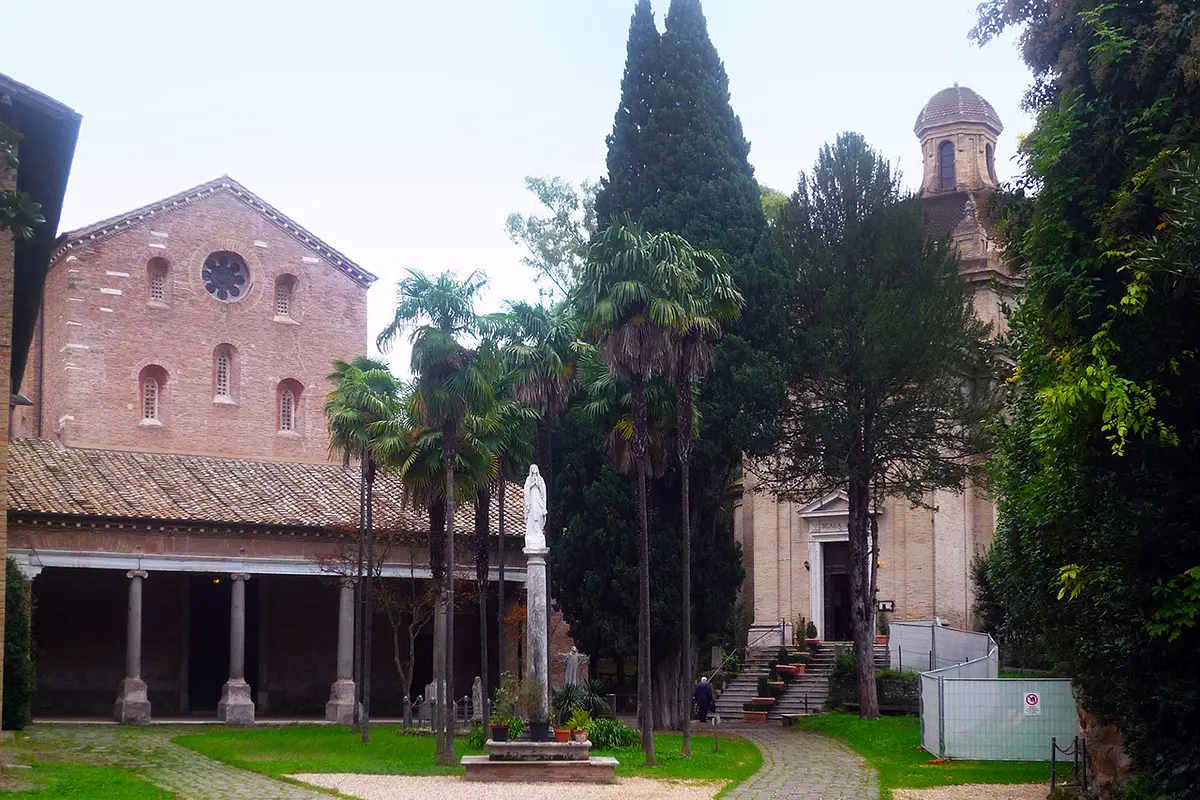











Three Fountains Abbey
From the Acquae Salviae to the miraculous fountains


Where

What it is and where it is
In Rome the cult of St. Paul is very much felt. Everyone knows where he is buried, but few know that the site of his martyrdom is along the Via Laurentina, where the monastic complex of the Three Fountains stands. Here Paul took his last steps. Welcome to the place that tells of religious experiences from the earliest past to the present day and speaks to us of relics that came from the East, Benedictine and Cistercian monks, religious paths, Pope Gregory I and Emperor Charlemagne, in a journey that, as in a film, already begins as you cross the threshold of the entrance courtyard.
Why it is special
In Rome but out of this world, this is the impression you get when you arrive at the Abbey of the Three Fountains. In fact, having passed the entrance arch, one has the impression of being in a "magical" place of peace and recollection, whose foundation is rooted in early Christianity. It, according to tradition, stands where the proto-apostle Paul was beheaded in the first century A.D. But this is only the beginning because, as is often the case in Rome, its history is much longer and more exciting...
Not to be missed
Each component of the complex has its own beauty: the Abbey of St. Anastasius and Vincent can amaze with the simplicity and bareness of the interior, especially in comparison with the lavish decorations we are used to in the churches of Rome; in the church of Scala Coeli you can visit the crypt where Paul was imprisoned before his execution. Finally, heading to the church of St. Paul, one will notice on the ground the ancient Roman paving along which he walked and which, together with the miraculous fountains in the interior, is vivid evidence of a tradition born so many centuries ago.
A bit of history
The Abbey of the Three Fountains is linked to the figure of St. Paul, who was beheaded in A.D. I: According to tradition, where Paul's severed head touched the ground three miraculous fountains sprang up, giving the complex its name and visible inside the church dedicated to him. In the 7th century the first monastery was built, housing the relics of St. Anastasius, later also consecrated to St. Vincent and transformed into an abbey. In the 16th century, opposite the abbey stands the church of Santa Maria in Scala Coeli, in memory of the mystical apparition of St. Bernard that occurred here in 1138. Today the abbey is run by Trappist monks.
Trivia
Among the many stories concerning the Three Fountains, two are truly unique and equally real: first, Trappist monks are in charge of raising the lambs whose wool is woven by the nuns of Santa Cecilia in Trastevere to make the papal pallium and archiepiscopal palliums, blessed in St. Peter's. Another story says that in the last century Romans used to go to the Trappists to enjoy rosettes (typical bread) with hot chocolate, of which the monks are famous producers (along with eucalyptus liqueur)!
Enter the Map of Italy's Undiscovered Wonders and find treasures where you least expect it... Inspire, Recommend, Share...
Contacts
Collections
The Map thanks:
In the Community
Enter the Map of Italy's Undiscovered Wonders and find treasures where you least expect it... Inspire, Recommend, Share...
Where

Contacts
Collections

